PEELE-ING BACK THE LAYERS OF NOPE
This blog contains spoilers for NOPE and should be read after viewing the film.
You’ve been warned!
It’s a rare occasion that we get to see an original film in theatres these days. We’re saturated in I.P. (Intellectual Property) from video games to comic books to sequels — audiences are not embracing anything that isn’t a sure thing. As of this writing, the only film in the top ten of the domestic box office this year that isn’t officially I.P. is a film about the best selling solo music artist of all time—Elvis Presley.
By contrast, NOPE comes purely from the mind of Jordan Peele. A big summer blockbuster, Peele’s cowboys-and-aliens film triumphs in being effective in multiple layered ways. Not only a spectacle itself, but a critique upon the very idea of spectacle, NOPE is Jordan Peele’s third original film in as many outings. It charts the discovery of a UFO/UAP in Agua Dulce, California just north of Los Angeles. As explained in the film, the term UAP (which stands for Unidentified Aerial Phenomena) has been used because “no one knows what the fuck a UAP is.”
I’ve seen the film twice now, and in both viewings the tragedy of Gordy’s Home (the 90’s sitcom that Jupe [Steven Yeun] starred in for a brief run) remains the most haunting event in the film. In some ways it’s also the inciting event when looking at the film in a more linear context. Without it, Jupe’s response to the UFO/UAP would’ve been very different, as would every event that cascades from it. The exploitation of Gordy, the exploitation of Jupe, the exploitation of the horses, and the exploitation of the UFO/UAP all build upon one another, cascading toward a finale that feels inevitable as the film races to a close. Though some of the story beats might feel familiar, Peele is smart to never make the film about a cataclysmic end-of-the-world event, instead focusing on the idea of spectacle and how humans believe in the things they can see; how photographic evidence can yield “truth” in ways that blurry military videos cannot.
We’re able to see the thesis of the film encapsulated in what appears to be a short diversion but in actuality gives us the keys to unlocking NOPE. What we see with Gordy is a microcosm of the larger story: taming a wild animal that we really have no control over.
In a really fun layer, the idea explored in NOPE of looking away from spectacle is precisely something you can’t avoid when viewing a movie. It brings voyeurism into the film in a way not done so nakedly since Hitchcock’s REAR WINDOW, another film about voyeurism and its relationship to the filmgoing experience. What is a show? What is worth watching? What is spectacle? What is exploitation?
For Peele to explore horse trainers (or more broadly, animal trainers) calls into question the idea of acting and performance as a sort of training or wrangling as well. The actress is called in and applauded for on set as a way to boost her confidence and control her in the same way that Daniel Kaluuya’s OJ keeps the horse calm and cool in front of the green screen set they stand on.
Film history is a continuum, one that is always in constant conversation with its past and leaving a message for its future. It’s one of the aspects that make film the art form of the 20th century and a distillation of human history. Peele’s command of storytelling and dexterity of structure are on full display in NOPE. Here is a confident auteur willing to flex his filmmaking muscles with proper studio backing (this film’s budget is more than 20 times that of his debut GET OUT). He’s aware of a whole spectrum of film history and peppers in references to films such as PHANTOM OF THE PARADISE while being aware of films such as CLOSE ENCOUNTERS OF THE THIRD KIND and SIGNS and knows where those films have tread with similar loglines. Kaluuya and Keke Palmer’s characters are even meant to be descendants of the horse trainer pictured in Eadward Muybridge’s famous zoopraxiscope experiments in the late 1800’s — Peele has reached all the way to the beginning of cinema and built an entirely new layer of spectacle upon it.
NOPE is a film to admire even if you can’t love it (and for the record I love it), but if you’re a supporter of original films and films shot on film (NOPE was lensed by Hoyte Van Hoytema on 65mm and IMAX film) and films shown in theatres, you must see this film as big as you possibly can...it’s a spectacle worth thinking about.



